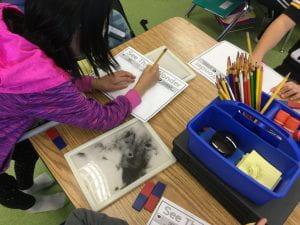Rube Goldberg Blog Post #2
As I designed this Rube Goldberg machine, I had not foreseen as many problems as there happened to be. I knew some parts would probably cause problems, sure, but it simply didn’t occur to me I’d have to take out as many parts as I did. At least you could still see the similarities between my sketch and the actual thing.
Designing the Rube Goldberg contraption was never the problem – I probably had a thousand ideas of what to add in, at least half of them impossible. No, designing was easy. It was the building and collecting that were hard. Like I said, I hadn’t accounted for so many problems. So when those problems surfaced, I was unprepared for the sudden tidal wave. Because of this, I had no backups and simply didn’t know what to do. I was, although I’m ashamed to say it, ready to give up.
But just when I started to hang up my cap, a superhero called “Mom” (a strange name for a superhero, don’t you think?) came to the rescue, which is, of course, what superheroes are meant to do. Mom helped me see the problems from a different perspective, allowing me to fix most of my problems. Although, of course, that meant sacrificing my pulleys, seesaw, Jenga blocks… etc. Still, it worked, and my paper ball was in the trash (along with some balls, pieces of cardboard and other unwelcome items).
There were certainly many lessons I learned, such as Don’t mope around and work on your projects or Don’t try and figure out fancy fonts for your We-Video and JUST GET IT DONE! You can see that the main point of focus was “don’t” rather than “do”. I’m afraid I must add yet another “don’t”, though, and that is Don’t give up. I was prepared to give up and Mom was as well (especially when I accidentally didn’t video it on the 6th try, which was our actual first attempt). Dad wasn’t really helping when he started telling us to video it, either. He only succeeded in making us more annoyed. Still, me and my mom supported each other, and we finally got through. So, just don’t give up.
I probably spent about 2 hours on the video. Some of which was tinkering around with fonts and special effects. It had already gotten late by the time I finished, so I left the narration to the morning. I don’t know if I was supposed to do this or not, but I fitted all my narration for one image or video into 6 seconds. I wasn’t able to add any effects other than slow-mo and there were no transitions. If I’d gotten more time, then I’d probably fix up a few things, such as add a walk-through into my video or some type of effect. I know it said 3 to 5 minutes, but I had no way to stretch it, and I ended up just having it almost 2 minutes. Really, I was just grateful to have completed everything before the deadline.
I have said this for probably every unit I’ve done a reflection post on, but I have to admit, there’s not much else to say. So I’ll say it again: I’ve enjoyed it, really, but sometimes the deadlines get you stressed and I really wouldn’t want to do this again (maybe without deadlines, of my own accord and not having to worry about any specific rules). I think you’re probably getting bored of me saying that all the time. Maybe the next unit will be more exciting, or even worse than before. I just hope I will not have to type that one sentence once more.

Rube Goldberg Sketch
Rube Goldberg WeVideo
